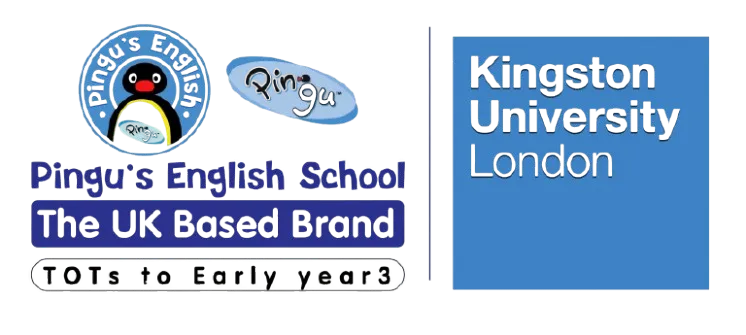Robotics
Unleashing Innovation: The Benefits of Teaching Robotics at Eureka School System
Welcome to Eureka School System, where we believe in providing students with cutting-edge education that prepares them for the future. Teaching robotics is a testament to our commitment to fostering innovation, problem-solving skills, and technological literacy. Here are some of the significant benefits of including robotics education in our curriculum:
Critical Thinking and Problem-Solving:
Robotics challenges students to think critically and solve complex problems. Designing, building, and programming robots require creative and analytical thinking, enhancing students' ability to tackle real-world challenges.
Technological Literacy:
In a digital age, technological literacy is essential. Teaching robotics equips students with a fundamental understanding of technology, programming, and automation, preparing them for a technology-driven world.
Future-Proofing Skills:
Robotics education ensures that students are prepared for the jobs of tomorrow. As automation and robotics become more prevalent in various industries, students with robotics skills have a competitive advantage in the job market.
Collaboration and Teamwork:
Robotics projects often require collaboration and teamwork. Students work together to brainstorm ideas, allocate tasks, and bring their creations to life. This collaborative experience mirrors real-world teamwork scenarios
Creativity and Innovation:
Designing and building robots encourages creativity and innovation. Students have the freedom to experiment with different ideas, fostering a culture of innovation and a willingness to explore new possibilities.
Practical Application of STEM Concepts:
Robotics integrates concepts from science, technology, engineering, and mathematics (STEM). It provides a practical context for applying theoretical knowledge, making STEM subjects more engaging and relevant
Confidence Boost:
Successfully designing and programming a robot is a confidence booster. Students experience a sense of accomplishment, which translates to increased self-esteem and a willingness to take on new challenges.
Real-World Simulation:
Robotics allows students to simulate real-world scenarios. For example, they can program robots to perform tasks like environmental monitoring, disaster response, or manufacturing, gaining insights into how technology can address real issues.
Multidisciplinary Learning:
Robotics projects often involve multiple disciplines, from mechanical engineering to coding. Students gain exposure to various fields, helping them discover their interests and potential career paths.
Preparing for Innovation Economy:
Innovation drives economies. By teaching robotics, we prepare students to be contributors to the innovation economy, where creative problem-solving and technological expertise are highly valued.
Ethical Considerations:
Robotics education includes discussions on ethics and responsible use of technology. Students learn about the ethical implications of robotics in areas such as privacy, AI, and automation.
In conclusion, teaching robotics at Eureka School System goes beyond technology education; it's an investment in our students' future success, innovation, and adaptability. By imparting robotics skills, critical thinking, and technological literacy, we empower our students to be innovative thinkers, problem solvers, and leaders in a rapidly evolving world.
Robotics
Unleashing Innovation: The Benefits of Teaching Robotics at Eureka School System
Welcome to Eureka School System, where we believe in providing students with cutting-edge education that prepares them for the future. Teaching robotics is a testament to our commitment to fostering innovation, problem-solving skills, and technological literacy. Here are some of the significant benefits of including robotics education in our curriculum:
Critical Thinking and Problem-Solving:
Robotics challenges students to think critically and solve complex problems. Designing, building, and programming robots require creative and analytical thinking, enhancing students' ability to tackle real-world challenges.
Technological Literacy:
In a digital age, technological literacy is essential. Teaching robotics equips students with a fundamental understanding of technology, programming, and automation, preparing them for a technology-driven world.
Future-Proofing Skills:
Robotics education ensures that students are prepared for the jobs of tomorrow. As automation and robotics become more prevalent in various industries, students with robotics skills have a competitive advantage in the job market.
Collaboration and Teamwork:
Robotics projects often require collaboration and teamwork. Students work together to brainstorm ideas, allocate tasks, and bring their creations to life. This collaborative experience mirrors real-world teamwork scenarios
Creativity and Innovation:
Designing and building robots encourages creativity and innovation. Students have the freedom to experiment with different ideas, fostering a culture of innovation and a willingness to explore new possibilities.
Practical Application of STEM Concepts:
Robotics integrates concepts from science, technology, engineering, and mathematics (STEM). It provides a practical context for applying theoretical knowledge, making STEM subjects more engaging and relevant
Confidence Boost:
Successfully designing and programming a robot is a confidence booster. Students experience a sense of accomplishment, which translates to increased self-esteem and a willingness to take on new challenges.
Real-World Simulation:
Robotics allows students to simulate real-world scenarios. For example, they can program robots to perform tasks like environmental monitoring, disaster response, or manufacturing, gaining insights into how technology can address real issues.
Multidisciplinary Learning:
Robotics projects often involve multiple disciplines, from mechanical engineering to coding. Students gain exposure to various fields, helping them discover their interests and potential career paths.
Preparing for Innovation Economy:
Innovation drives economies. By teaching robotics, we prepare students to be contributors to the innovation economy, where creative problem-solving and technological expertise are highly valued.
Ethical Considerations:
Robotics education includes discussions on ethics and responsible use of technology. Students learn about the ethical implications of robotics in areas such as privacy, AI, and automation.
In conclusion, teaching robotics at Eureka School System goes beyond technology education; it's an investment in our students' future success, innovation, and adaptability. By imparting robotics skills, critical thinking, and technological literacy, we empower our students to be innovative thinkers, problem solvers, and leaders in a rapidly evolving world.
Get In Touch
Email: [email protected]
Address:
Office: 8O4,8O5,8O6 Park Avenue, opposite to Lal Kothi
Phone Number:
+92 333 1162761
Get In Touch
Email: [email protected]
Address:
Office 8O4,8O5,8O6 Park Avenue, opposite to Lal Kothi.
Phone Number:
+92 333 1162761











